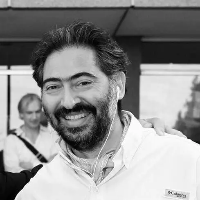Design Process (Decoding " Analogy" as a Major Method of Form and Space Producing)
Focusing on producing urban and architectural form and space، this article explores the design process. It reviews several methods of design and narrows them all down to a major method known as “Analogy”. In fact، the article concludes that “Analogy” has been one of the main methods of design for designers. They have mostly tried to find an “Analogy” between the outcome and elements of design including the “site”، “program”، “case studies” and “themes” of the project. This way of design، based on “Analogy”، may vary from direct and objective to indirect and subjective techniques and almost covers all other methods discussed by theoreticians. Researches around design process are mainly emphasized not later than 1945. Encouraged from new scientific methods on one hand، movements emerged through a series of seminars in England during 1960s and 1970s and expansion of creativity techniques on the other hand; the design procedures underwent serious studies. Since creativity is a genuine and better way (Faruque 1984) and a power to find an unconventional and perfect solution for an issue as well as a new look at the realities and a process for breaking pre-assumptions (Guilford، 1967)، the subjects expressed in the design method have either faced criticism and/or، the writings in this area are usually presented in a generalize form in order to escape from the cliché making and conventionalism criticism. Even though in the view of some، death knocked the door of design process in 1970s; however، in 1980s، it was revived especially in engineering and industrial design fields. Thus، in order to study the process of producing forms and spaces، first the design procedure and its general dual stages; that is analysis and compositions have been studied and reviewed through the above mentioned backgrounds. In continuation، those methods have been compared in the views of some theorists and successful works of some contemporary architects as well as their design methods have been criticized with the above-mentioned methods and subsequently، the design and architecture form production is revised. The main findings of this research show that “Analogy” as evaluation and assessment of final form (composition) with the analytical categories (analysis stage) is one of the main stages and factors in architecture form production، and based on imagination and image of the designer، it could be used in the design procedures directly and objectively or indirectly and subjectively. As an “Analogy” has internal and external degrees، the analysis categories could be distinguished from inner degree (plan and site) to external degrees (case studies and phenomena). In another word، the “Analogy”، in this study، is demonstrated to be Meta-method or one of the main methods of design and other techniques can be easily classified into different levels of “Analogy”، from direct/objective to indirect/subjective ways of “Analogy”. For instance، discussed methods of design in this article such as pragmatic، programmatic، and essence techniques can also be known as direct and objective methods of “Analogy” while canonic، ideal، metaphor methods might be considered as indirect and objective “Analogies”.
Design Process , Idea , Concept , Form , Space Creation , analogy , Metaphor
- حق عضویت دریافتی صرف حمایت از نشریات عضو و نگهداری، تکمیل و توسعه مگیران میشود.
- پرداخت حق اشتراک و دانلود مقالات اجازه بازنشر آن در سایر رسانههای چاپی و دیجیتال را به کاربر نمیدهد.



